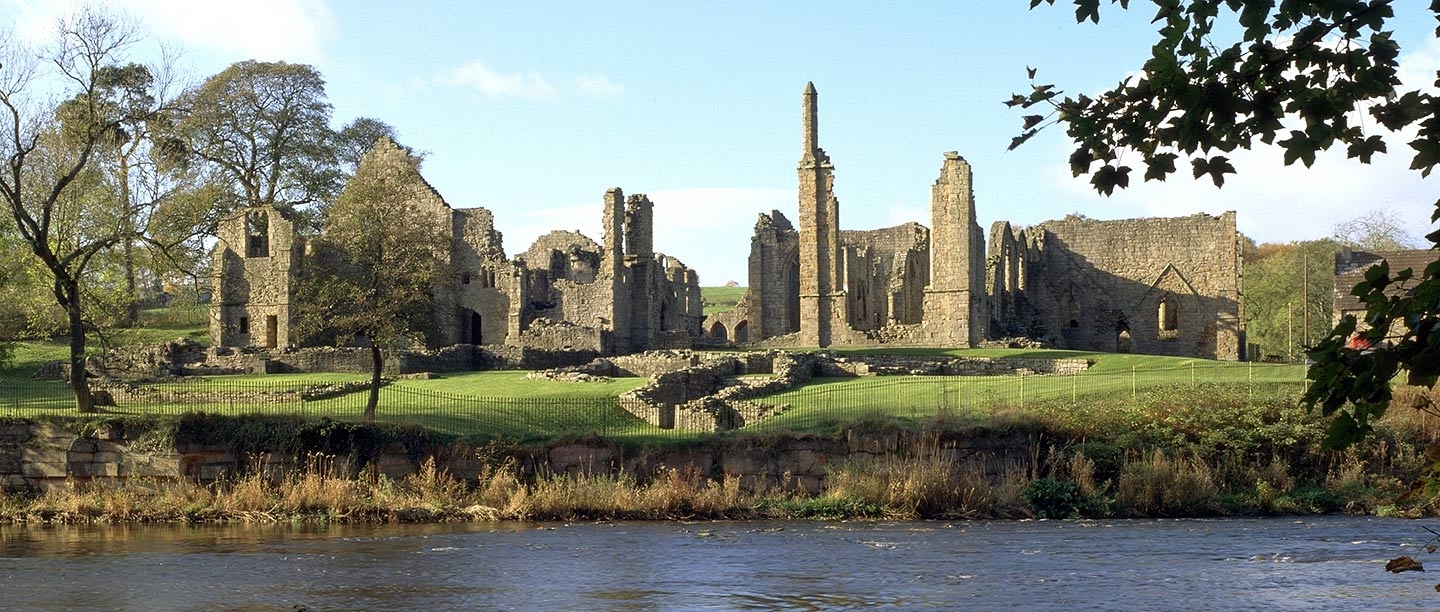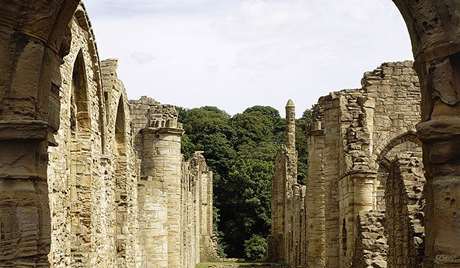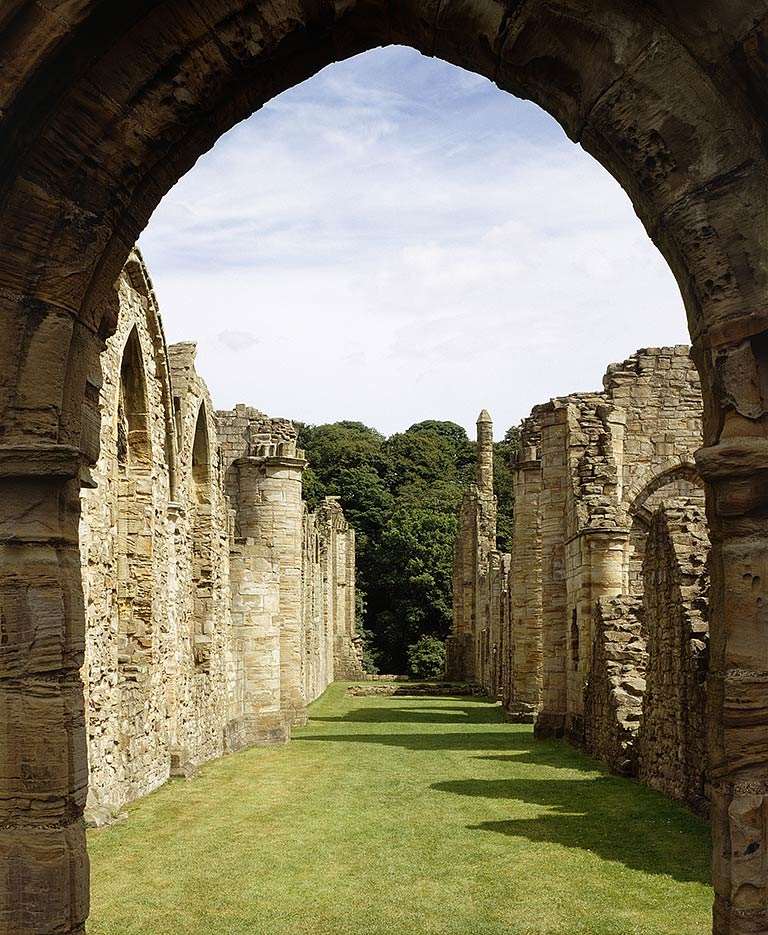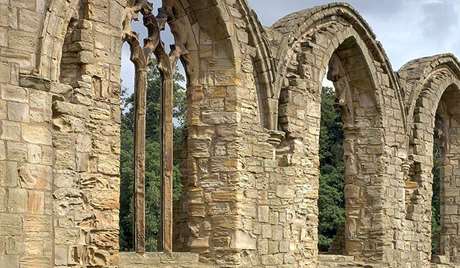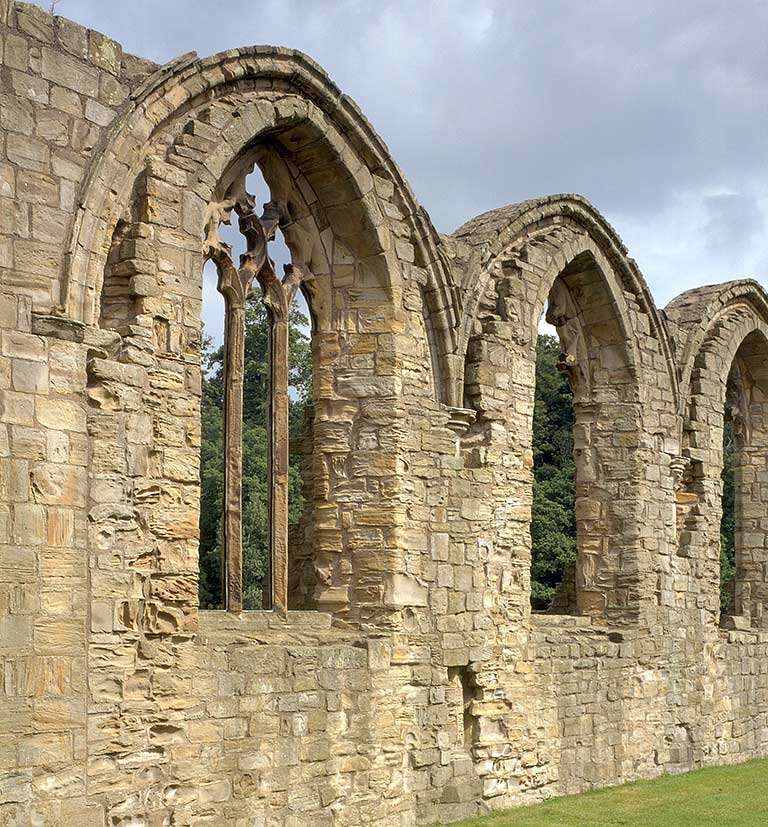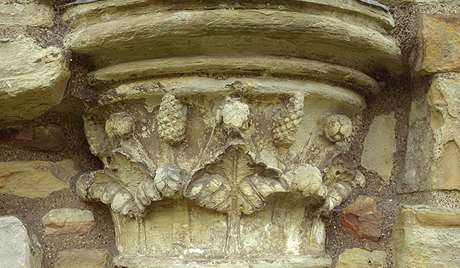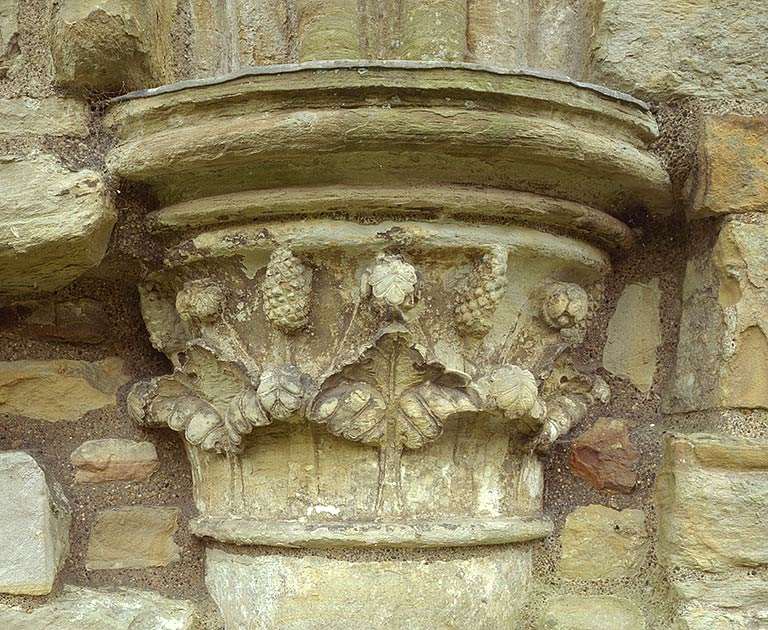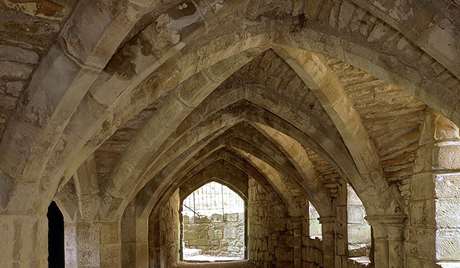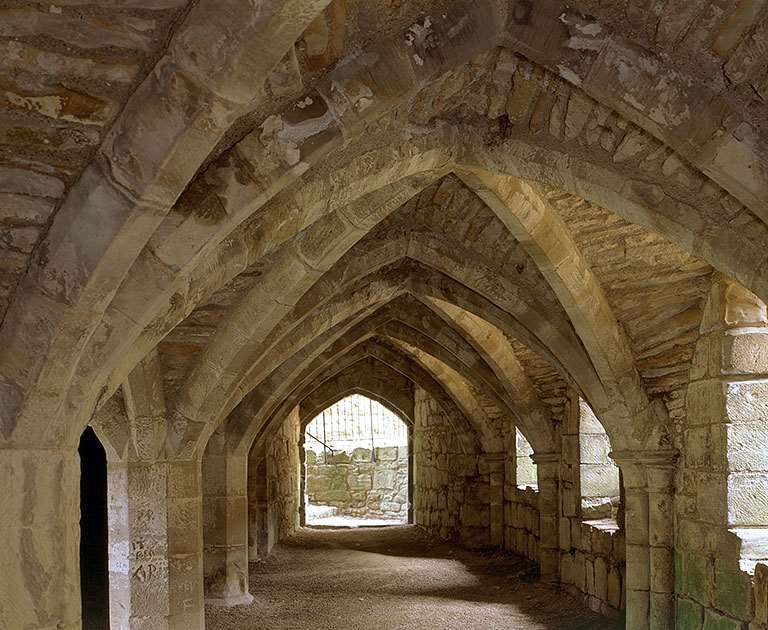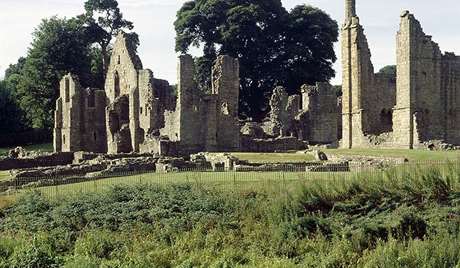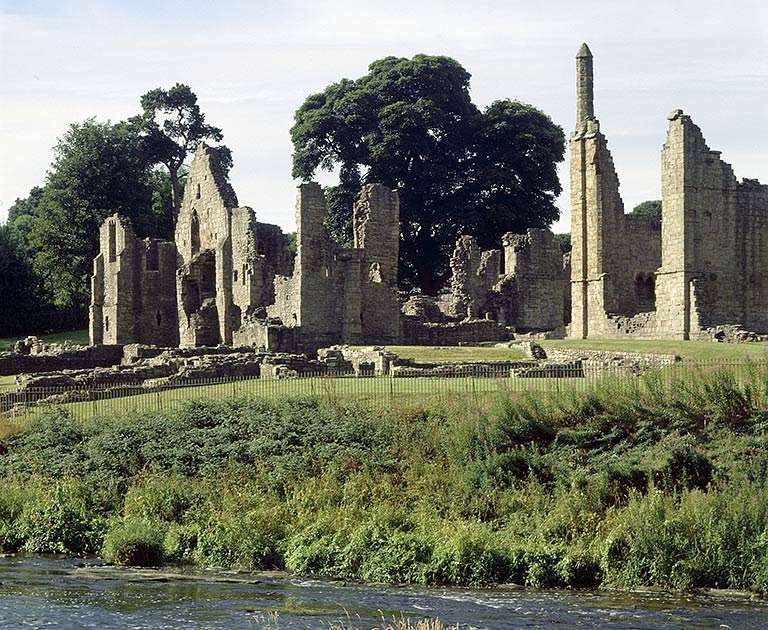Godric’s early life
According to his biographer, the monk Reginald of Durham, Godric was born at Walpole in Norfolk into a poor family. He became a travelling pedlar at an early age, and soon became a sailor and successful merchant, trading with Scotland, Denmark and Flanders.
In the course of his travels Godric went on several pilgrimages, including one to Jerusalem. On his journey back from there he visited the shrine of Santiago de Compostela in northern Spain.
His pilgrimages, as well as visits to Lindisfarne and the Farne Islands off the Northumbrian coast – where he would have heard many tales of St Cuthbert’s life as a hermit – clearly left a deep impression on Godric. In 1104 or 1105 he abandoned seafaring to become a hermit himself. Initially he lived in caves and woods before settling with an elderly hermit at Wolsingham in upper Weardale. After his companion’s death he made one last pilgrimage to Jerusalem before returning to north-east England.
Godric at Finchale
In late 1112 or 1113, while he was living in Durham, Godric heard of Finchale, a few miles downstream on the river Wear, and with the approval of the landowner, the Bishop of Durham, he settled there. His first hermitage was probably a mile or so upriver from Finchale – a spot now known as St Godric’s Garth – but he soon moved to the site where the ruins of Finchale Priory now stand. He was to remain there for the last 60 years of his life.
Here he built himself a hut with a turf roof, and a chapel in which he had a crucifix, an image of the Virgin Mary, and a bell. His life as a hermit was severe. He often prayed immersed in cold water, either in the river or in a barrel set in the floor of his chapel. He fasted frequently, wore a hair shirt and chain mail, and slept with a stone as a pillow.
As well as these self-imposed hardships, Godric was robbed and beaten by marauding Scots in about 1138, and narrowly survived a flood in about 1150 when the Wear burst its banks. In thanksgiving for this escape he built a new church dedicated to St John the Baptist, which he linked to his earlier chapel with a thatched walk or cloister.
His life was not totally solitary, as his mother, brother and sister all came to live nearby within a few years of his arrival. Several notable individuals are said to have consulted him, including Thomas Becket, Aelred of Rievaulx and Pope Alexander III, and King William the Lion of Scotland visited him in person.
Later in life Godric submitted to the authority of Durham Cathedral Priory, and as he grew more and more infirm, one or more of the Durham monks came to live with him. After eight years confined to bed in his little church, living on milk, and frequently depressed and irritable, Godric died, aged around 100, on 21 May 1170. He was buried against the north wall of his church, where his burial place is marked by a cross in the grass.
Godric the songwriter
Godric had a perhaps unexpected gift for music. Four songs written by him are the oldest songs written in English for which the original music survives.
His best-known song came to him in a vision of the Virgin Mary, telling him to sing it whenever he was tempted, weary or in pain. Another reflects Godric’s earlier career, as it is a prayer to St Nicholas, the patron saint of sailors:
Saint Nicholas, God’s beloved,
Build for us a fair bright house;
At the birth, at the bier,
Saint Nicholas, bring us safely there.
(Translation from Middle English from A Clerk of Oxford, ‘The Songs of Godric of Finchale’, 2012)
Image: The music of Godric’s hymns, preserved in an early 13th-century manuscript
© British Library Board (Royal 5 F VII, fol 85)
Listen to Godric’s songs
A new priory
After Godric’s death the Durham community sent two monks, Reginald and Henry, to occupy his hermitage. In effect, Finchale became a small, subordinate monastery of Durham. In 1196 it became a priory in its own right when the monks of Durham persuaded Henry du Puiset, son of Bishop Hugh du Puiset of Durham, to endow it with possessions he had previously bestowed on another monastery.
The priory prospered as a place of pilgrimage. Initially it seems to have had ten monks, but a grant made in 1278 specified that there should be five more, to help entertain the pilgrims and poor people who were flocking to Godric’s shrine.
Godric’s old church seems to have remained standing while a new church was built around it. His older chapel, dedicated to St Mary, was rebuilt on its old foundations and linked to the north arm of the new church. Building took several decades, and may not have begun until the 1230s.
Below: A reconstruction of the church at Finchale Priory as it may have looked in about 1320, showing how the artist used geospatial survey data to help reconstruct a 3D model of the priory
© Historic England/English Heritage Trust (artwork by Bob Marshall)
A holiday home
During the first half of the 14th century many monasteries in northern England were reduced in size, mainly because of the loss of income brought about by years of warfare between the English and the Scots. There seem to have been only five or so monks living at Finchale, and its buildings were in a poor state.
The monks’ response was twofold. First, in the 1360s they reduced the size of both their church (by removing the aisles) and the other buildings. At the same time, the prior’s house was renovated, suggesting that it had become the focus of life for the small community. Secondly, they concentrated on Finchale’s role – which it may have been serving for some time – as a retreat for the monks of Durham. Finchale continued to serve this function until the Suppression.
Rules drawn up in 1408 spell out how the ‘holiday home’ operated. The arrangement was that four monks would stay at Finchale for three weeks at a time, under the supervision of the prior and four resident monks. On alternate days two of the four holidaying monks were to attend all the usual church services, while the other two, though attending Mass and Vespers, were free to walk ‘religiously and honestly’ in the fields.
How strictly the Finchale monks followed the rules is unclear. There are references to them being reprimanded for keeping sporting dogs and attending hunts – but this was a common complaint in the late Middle Ages, and was probably not seen as a major breach of monastic vows.
The position of prior of Finchale was highly prized, and was often filled by men of distinction. The last one, however, one William Bennett, married so soon after the Suppression released him from his monastic vows that he gave rise to a local proverb: ‘The Prior of Finkela hath got a fair wife, and every monk will have one.’ In fact, few monks in northern England married after the Suppression; most retained their long-held religious beliefs.
Use the sliding bar to see how the cloister at Finchale may have looked in about 1320 (left) and 1400 (right). By the end of the 14th century the church aisles had been removed, a new cloister walkway had been incorporated into the former south aisle of the church, and the cloister arcades were closed in. © Historic England/English Heritage Trust (illustrations by Bob Marshall)
Decay and rediscovery
We know little about what happened to the buildings after Finchale Priory was suppressed in 1538. Some parts remained in use, but most fell into ruin. Robbed stone from the priory buildings can be seen in nearby farm buildings.
There may have been some selective ‘landscaping’ through demolition in the 18th century to ‘improve’ the site’s appearance, at a time when ruins and romantic landscapes became popular. In the 19th century growing antiquarian interest led to repair and conservation of the extensive remains.
In the 1920s, soon after the Office of Works (a predecessor of English Heritage) had taken the priory into state guardianship, Sir Charles Peers supervised the clearance of fallen debris and excavated some areas. He traced the foundations of Godric’s church of St John inside the east end of the 13th-century monastic church, and uncovered a stone coffin exactly where Reginald of Durham describes the saint’s grave as lying, against the north wall. The coffin was only 1.57 metres (5 ft 2 in) long inside and tapered from 41 centimetres (16 in) at the shoulders to 17 centimetres (7 in) at the foot – a reminder of Godric’s slight stature and wasted frame after his long illness. His remains had long since vanished, and his final resting place is unknown.
Image gallery
Further reading
A Clerk of Oxford [E Parker], ‘The songs of Godric of Finchale’ (2012) (accessed 7 Aug 2019)
Frederick Buechner, Godric (1981) [fictional retelling of Godric’s life]
Reginald of Durham, The Life and Miracles of Saint Godric, Hermit of Finchale, ed. and trans. Margaret Coombe (Oxford, 2022)
Reginald of Durham, Libellus de vita et miraculis S. Godrici, heremitae de Finchale, ed. J Stevenson, Surtees Society, 20 (London, 1847)
Reginald of Durham, ‘Life of St Godric’, in Social Life in Britain from the Conquest to the Reformation, ed. GG Coulton (Cambridge, 1918), 415–20 (accessed 7 Aug 2019) [translated extracts]
M Heale, The Dependent Priories of Medieval English Monasteries (Woodbridge, 2004)
CR Peers, ‘Finchale Priory’, Archaeologia Aeliana, 4th series, 4 (1927), 193–220 (accessed 8 Aug 2019) [a general historical account and description, with details of the areas excavated in the 1920s]
JT Perry and C Henman, Illustrations of the Medieval Antiquities of County Durham (Oxford, 1867) [includes 18 plates of Finchale with drawings of architectural details]
J Raine, ed., The Charters of Endowment, Inventories and Account Rolls of the Priory of Finchale in the County of Durham, Surtees Society (London, 1837) (accessed 7 Aug 2019) [reprints most of the surviving documentation in Latin]
E Roberts, ‘On Finchale Priory, Durham’, Journal of the British Archaeological Association, 23 (1867), 67–85 (subscription required; accessed 8 Aug 2019) [mid-Victorian account with a plan]
P Ryder, Finchale Priory (English Heritage guidebook, London, 2000) (buy the guidebook)
V Tudor, ‘Godric of Finchale (c.1070–1170)’, Oxford Dictionary of National Biography (Oxford, 2004) (subscription required; accessed 7 Aug 2019)
Surviving books from the priory
Find out more
-
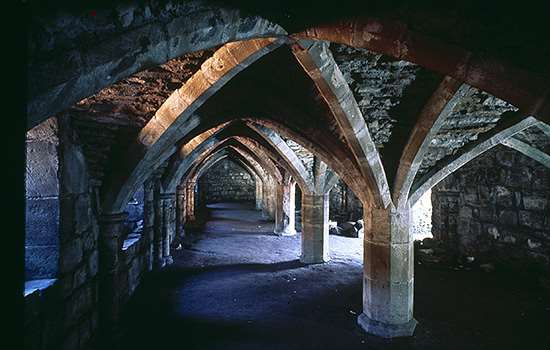
Visit Finchale Priory
Explore the extensive remains of the priory, which lie in a loop of the river Wear, in a beautiful wooded setting.
-
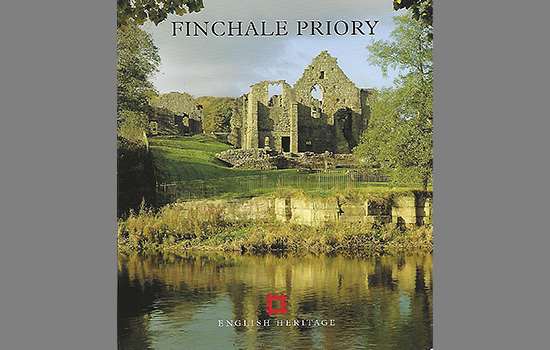
Buy the guidebook
The guidebook gives a full history of the priory and a tour of the extensive monastic remains.
-
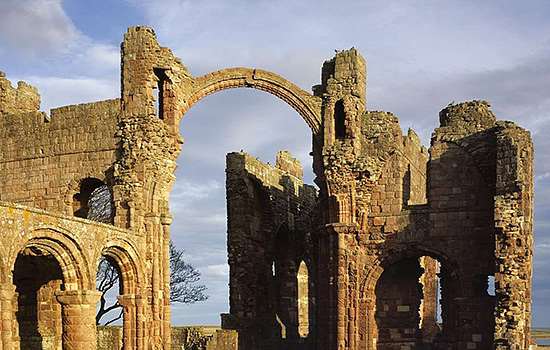
Visit Lindisfarne Priory
Visit the dramatic remains on Holy Island, where Godric was inspired by stories of St Cuthbert’s life as a hermit.
-

MORE HISTORIES
Delve into our history pages to discover more about our sites, how they have changed over time, and who made them what they are today.
